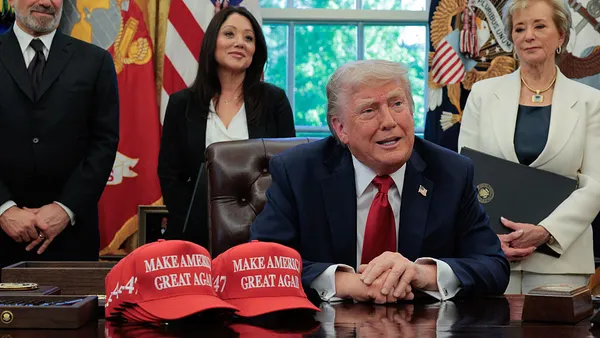As we approach World Mental Health Day, there’s no better time to reflect on the undeniable link between our mental and physical well-being. Historically, health care systems and benefits have treated the mind and body as separate. Yet we know, and the science demonstrates, that physical health, along with factors such as financial and social well-being, are closely tied to mental health.
As Joe Grasso, PhD, our senior director of Workforce Transformation, shares, “Employee well-being isn’t just about finding the right benefits; it’s a delicate balance of addressing the varied health, financial and social challenges that can steal focus from their lives and work. Organizations that navigate this terrain with empathy, training and holistic support are able to positively impact both employee and organizational health.”
That’s why we’re making it easier to connect people with other employer-sponsored benefits that address the underlying issues impacting mental wellness via our integrated benefits ecosystem.
Integrated health care supports employees and organizations
That’s why our focus is on connecting the dots within the benefit ecosystem, making it easier for people to access care and for organizations to reduce their overall costs. When employers approach care holistically, both workers and organizations benefit. Here are some ways different aspects of health affect employee and workplace wellness:
Financial stress impacts mental health
An employee who’s struggling financially may experience high levels of stress and anxiety. Worries about finances can lead to poor concentration, absenteeism and feeling less satisfied at work, all of which contribute to declining mental health.
Mental health slows productivity
Employees with untreated mental health issues like depression or anxiety may also find it tough to perform well at work. Lower productivity can then lead to missed opportunities for promotions, fueling financial and work-related anxiety.
Physical health deteriorates from stress
Ongoing stress from work or personal issues can lead to physical health problems like hypertension, weakened immune function and insomnia. These physical health issues can increase medical costs and time off work, creating additional financial strain.
Social isolation affects physical health
Employees who are left out or socially isolated can feel lonely, which has been linked to a higher risk of heart disease, stroke, hospitalization and emergency department visits. These consequences can raise insurance claim costs, absences and disability leave requests.
A holistic approach to benefits supports these disparate but interconnected parts of well-being, leading to better health, which can boost job satisfaction, reduce stress and increase productivity. Employers, in turn, benefit from a more engaged and motivated workforce.
The people leader challenge: how to build a cohesive well-being strategy
A robust benefits package matters more than ever to top talent, and they’re willing to switch jobs to find it. Recognizing this, people leaders have meticulously constructed packages spanning physical wellness programs and financial security measures to mental health support.
But we’ve also heard from benefits leaders that they often face the uphill battle of driving awareness and utilization of disparate and ever-expanding well-being solutions, causing efficiency hurdles for them and hindering employees’ ability to navigate and use their benefits.
“Having impactful benefits needs to be coupled with multifaceted communication and streamlined engagement strategies to help reach as many employees as possible,” says Stephanie Frias, our chief people officer. “Particularly in a budget-constrained environment and a busy world, making sure employees are aware of all the benefits they have by surfacing them intelligently within multiple platforms and delivering them in a unified way makes the most out of your individual benefits investments and supports the whole person in a more meaningful way.”
3 steps toward a whole-person benefits strategy
So, how can people leaders level up to a more holistic benefits approach?
#1 Assess your employees’ needs
Assessing your employees’ diverse needs and preferences can reveal key training gaps and needed support services. Some helpful data sources include surveys, group dialogue and health care claims.
#2 Review current benefits programs
Research shows that businesses can expect measurable ROI from a more holistic approach to health care benefits. For example, companies that use Lyra save $2,300 per person in health plan spend, and see a 70 percent jump in employee productivity scores and doubled employee retention.
Yet many organizations still have complicated benefit systems that employees don’t fully understand or use. As a result, employees and their families go without the care they need, benefits leaders bear the burden of managing these complex systems, and employers waste precious resources on benefits that don’t achieve their intended goals. By assessing existing benefits programs for efficacy and ROI, you can determine if your current ecosystem meets your workforce’s needs.
#3 Optimize the experience with better integration
Faced with talent challenges and heavy workloads, people leaders need better tools to deliver integrated health care benefits. At Lyra, we’re helping to lead this charge. Our platform intelligently recommends other relevant benefits based on members’ descriptions of the issues they’re facing. These personalized recommendations help people find the right care for them, across all their available benefits.
For example, a woman using the Lyra platform for a mental health concern who indicates she’s having fertility-related issues may get a personalized suggestion about her employer-sponsored fertility benefit. This proactive approach allows her to prioritize her mental health while also accessing support for her fertility concerns, enhancing her overall well-being.
We believe connecting the dots among different benefits solutions specializing in areas that influence mental health is a win for all: Employees have an easier time finding care to feel their best. And benefits leaders help organizations streamline administrative costs, while improving employee engagement and well-being.
Paving the way toward integrated benefits
In the face of rapidly rising health care costs, now is the time to balance spending with a holistic benefits experience. We’re your partner in this next evolution of workplace benefits. Offering a robust benefits package is a crucial step, and to boost awareness, utilization and ROI, your programs need a new level of personalization. Better integration makes benefits plans easier to navigate for the employees who use them and the HR teams who oversee them, with better results for the organization as a whole.










